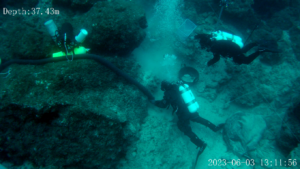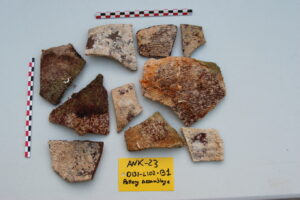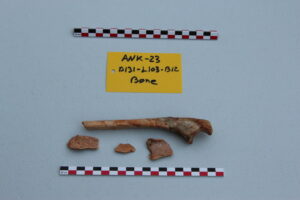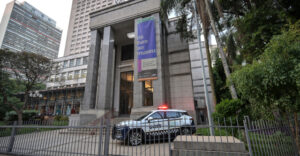According to a statement released by the University of Geneva, researchers led by Angeliki G. Simosi of the Ephorate of Antiquities of Piraeus and the Islands and Lorenz Baumer of the University of Geneva recently returned to the site of the Antikythera shipwreck, where they uncovered a sculpture fragment thought to belong to the beard of a Herakles sculpture discovered last season; human skeletal remains; artifacts made of pottery, glass, and copper alloy; and lead and wood pieces of the ship itself. The team members also employed remote-controlled drones and digital capture equipment to document the site.
The data from this year’s work will be added to all known data from previous excavations dating back to 1900 to create a 3-D model of the site. The information will allow the scientists to study the position of the wreck, its state of preservation, its cargo, and perhaps even to investigate the route it had been traveling when it sank in the first century B.C. off the coast of the Greek island of Antikythera. The vessel was loaded with luxury goods, including bronze statues, marble sculptures, and a device known as the Antikythera mechanism, which is thought to have been used to predict the movement of celestial bodies and track a four-year cycle of athletic games.
source archaeology.org




Ask me anything
Explore related questions





